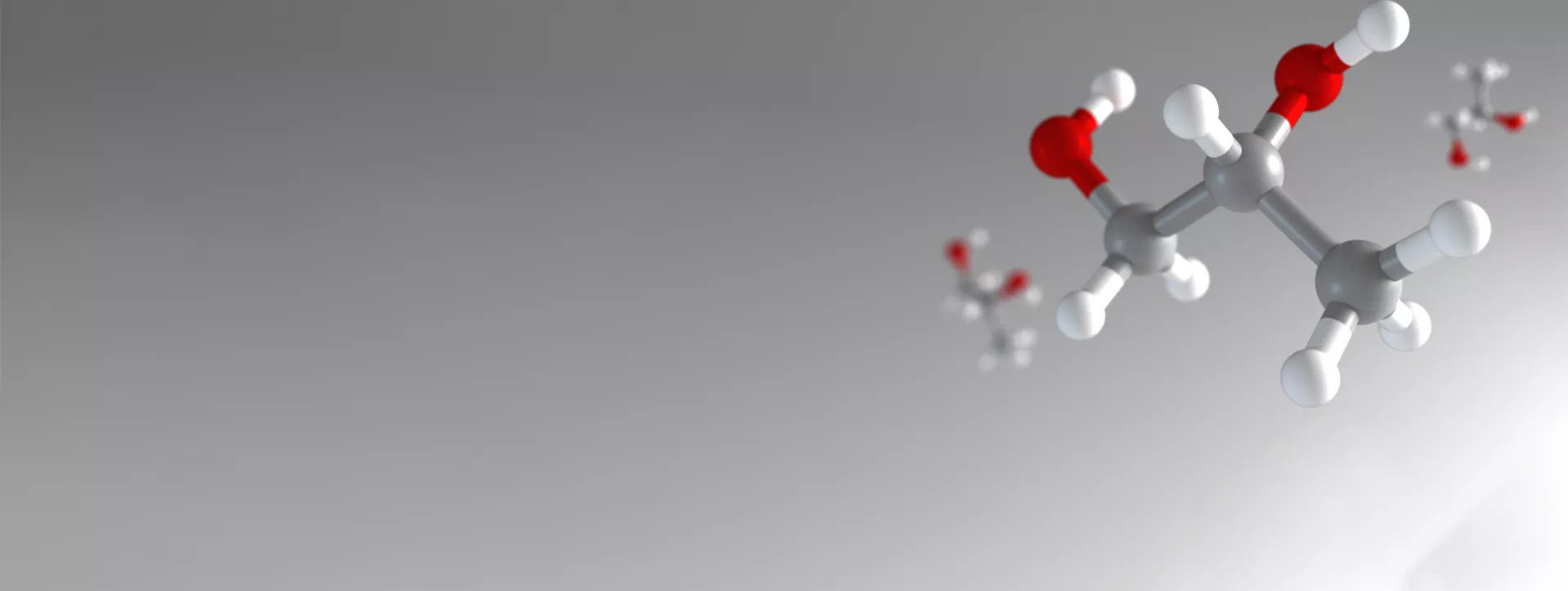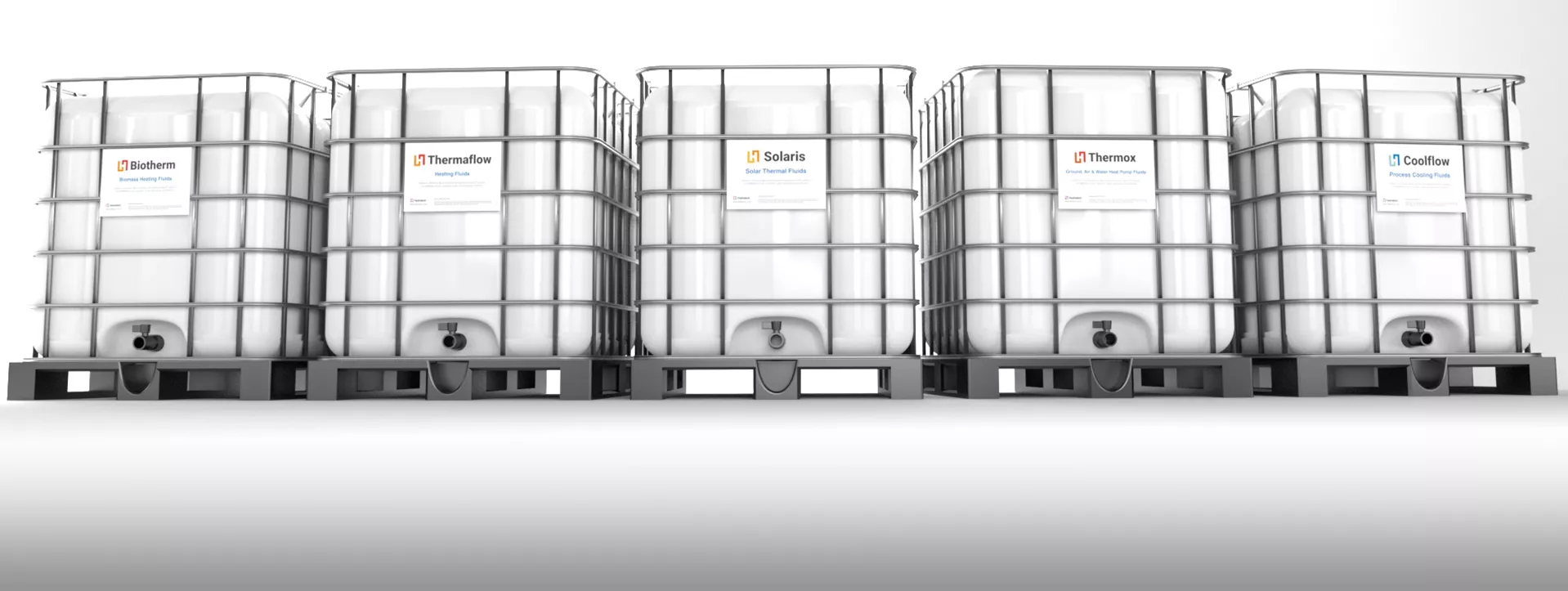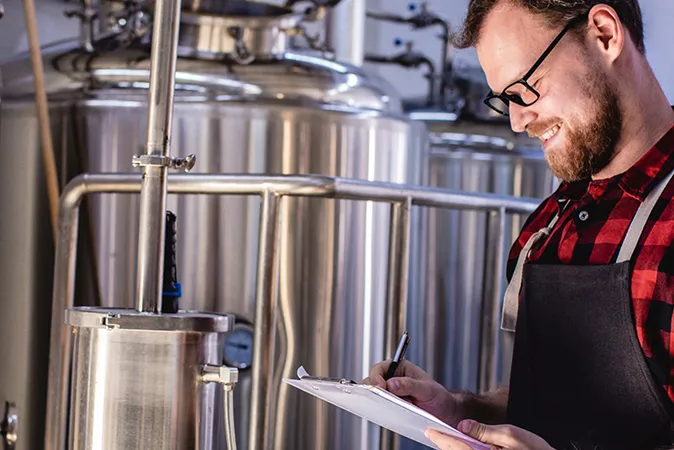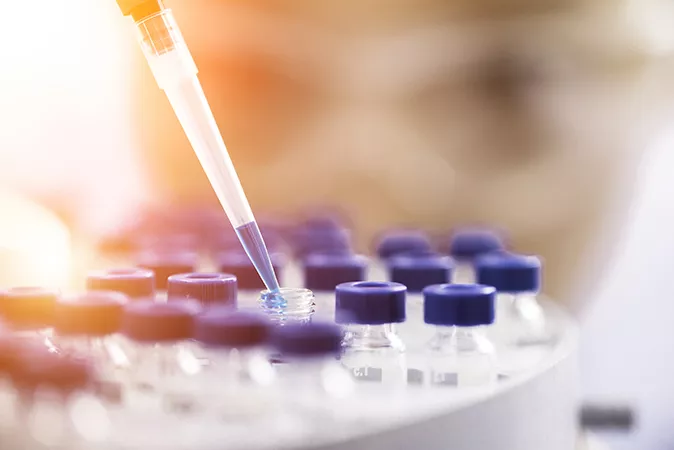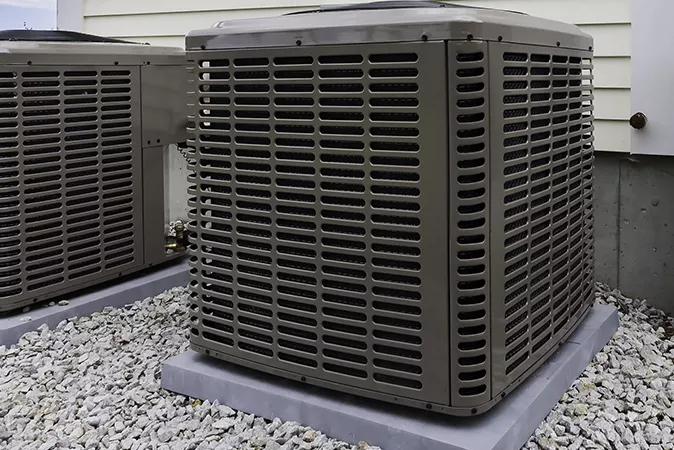Core Info - Propylene Glycol
Mono Propylene Glycol, commonly referred to as Propylene Glycol but also referred to as Propane-1,2-diol, MPG, PG and Food Safe Glycol. Propylene Glycol has for many years been the go-to glycol for use in food and beverage processing systems or where there is a requirement for a non-toxic classification. E.g. where the specifier or end user wants to eliminate any risk of accidental poisoning, as might occur with mixtures of water and Ethylene Glycol.
Propylene Glycol is commercially produced through a chemical reaction between Propylene Oxide and a catalyst. Global capacity is in excess of 1.5 million tonnes per year.
Propylene Glycol - main uses
-
Water based heat transfer fluids, which require an antifreeze function.
-
Secondary refrigerants (liquid) in large cooling systems, where the primary refrigerant (gas) and associated plant are positioned in a central location.
-
Chiller glycol is an alternative term for secondary refrigerant, but the latter category also includes salt based brine's, alcohols and non-aqueous fluids.
-
Waterless and water-based engine antifreeze formulations.
-
As a chemical feed-stock for the production of polyester resins.
-
Deicing fluid for aircraft and runways.
-
Humectant, to maintain moisture (water) levels is tobacco and some food stuffs.
Propylene Glycol - characteristics
- Clear water-white, mildly sweet, slightly viscous liquid.
- Neat propylene glycol boils at 188°C and freezes at -51°C when mixed with <39% water.
- Hygroscopic and miscible with water in all proportions.
- Readily biodegradable and does not bioaccummulate.
- Concentrations above 25% v/v in water provide a biostatic function.
Propylene Glycol is sometimes classified as Pharmacopeia Grade, or suitable for use in pharmaceutical products. E.g. USP, EP and JP. Another generic classification used in the USA is GRAS (Generally Considered As Safe), which is often transposed in to meaning ‘food grade’. However there are no European countries that have passed Propylene Glycol for use as a food additive and therefore the ‘food grade’ tag could be considered somewhat spurious.
Neat Propylene Glycol has a LD50 of >20,000mg/kg BW which positions it as ‘Relatively Harmless’ according to the Hodge & Sterner Toxicity Scale. In comparative terms a small child weighing 30kgs would have to consume approx 600ml of neat Propylene Glycol before suffering severe illness. I.E. toxicity is a relative term.
Propylene Glycol has a much lower capacity for efficient heat transfer, compared with Ethylene Glycol based mixtures. It is also much more viscous at low temperatures and thus provides more of a challenge to pump.
Recently a vegetable based Propylene Glycol has become commercially available, if not always financially viable. Propane-1,3-diol has very similar heat transfer and pumping characteristics to Propane-1,2-diol but with a better environmental profile.
Significantly More Energy Efficient Than Propylene Glycol - Coolflow DTX® Non-Toxic HT1 Certified Heat Transfer Fluid
Proven to reduce energy costs by >10% (as verified by Star Technical Services), Coolflow DTX® is a revolutionary non-toxic secondary refrigerant, suitable for replacing propylene glycol in food & beverage process cooling and other applications where a non-toxic classification is preferred.
Performance wise, DTX has very similar heat transfer and pumping characteristics to ethylene glycol and subsequently benefits from numerous operating advantages such as low viscosity, low dose rates and smaller systems and plant footprints onsite.
By retrofitting existing systems - moving from propylene glycol to Coolflow DTX®, customers have reported considerable CO2 savings and a noticeable reduction in running time and load on their primary refrigerant compressors, which they believe will considerably prolong the life span of their system.
to minimise biological contamination.
The question is often raised, about the recommended minimum concentration of Propylene Glycol which should be used in a solution of water. Hydratech recommend a minimum of 25-30% v/v which provides a freeze protection of below -10°C, but often the operator only require freeze protection to, for example, -2°C which would require significantly less Propylene Glycol by volume.
There are several reasons for the recommended minimum concentration;
1) Corrosion, Scale & Biological Control. Hydratech Propylene Glycol based heat transfer fluids are formulated to operate in both cooling and heating systems at a wide range of concentrations. To provide protection over a long period of time, the initial mixture must also have the right balance of corrosion, scale and biological inhibitors in order to maintain proper corrosion control at various concentrations. The inhibitors in CoolFlow NTP are formulated to give the best possible performance and fluid lifetime at Propylene Glycol levels between 25 and 60% v/v. Reducing the Propylene Glycol concentration below 25% reduces the inhibitor concentrations to a level that may not provide adequate corrosion, scale and biological protection for a system.
2) Increased pH buffering against acid degradation. Both Ethylene and Propylene Glycol break down on exposure to high temperatures. With a higher concentration of fluid, there is also a greater concentration of inhibitor present in the solution. The higher concentration of inhibitors provide increased pH buffering to counteract acidic by-products, that may be formed due to Propylene Glycol degradation.
3) Biological integrity of the fluid. The third reason for using at least 25% Propylene Glycol in the system concerns the possibility of bacterial growth. With concentrations at or above 20%, both Ethylene and Propylene Glycol inhibit the growth and proliferation of most microbes and fungi. The reduced surface tension in the glycol solution interrupts the cell walls of the bacteria, resulting in an environment that will not support bacterial growth. At very low glycol concentrations, for example below 1%, both Ethylene and Propylene Glycol act as a nutrient for bacteria. At these concentrations, bacteria will biodegrade the Propylene Glycol causing rapid growth of bacterial contamination. At levels above 1 and below 20%, some bacteria can survive with limited growth, especially at moderate temperatures.
The presence of bacteria does not always imply bacterial growth. Solutions of 25% or more glycol are biostatic, not biocidal. Therefore if a source of bacteria is introduced in to solutions of Propylene Glycol, the fluid may show the presence of bacteria. For this reason Hydratech recommend the pre-commission cleaning of new installations and periodic testing of the system fluid to check for any biological activity – please refer to the SureFlow Fluid Maintenance Program for more guidance. To further minimise the possibility of contamination from external contamination, all Hydratech formulations include both short-term and long-term biocides.
1. OECD Screening Information Data Set (SIDS) Assessment for Propylene Glycol
Chemical Name Propylene glycol (1,2-dihydroxypropane) CAS No. 57-55-6
Structural Formula CH3-CHOH-CH2OH
Recommendations The chemical is currently of low priority for further work.
Summary Conclusions
Human Health
Propylene Glycol is not acutely toxic. The lowest oral LD50 values range between 18 and 23.9 grams (5 different species) and the reported dermal LD50 is 20.8 grams. Propylene Glycol is essentially non-irritating to the skin and mildly irritating to the eyes. Numerous studies support that Propylene Glycol is not a skin sensitizer. Repeated exposures of rats to propylene glycol in drinking water or feed did not result in adverse effects at levels up to 10% in water (estimated at about 10 g/kg bw/day) or 5% in feed (dosage reported as 2.5 g/kg bw/day) for periods up to 2 years. In cats, two studies of at least 90 days duration show that a species-specific effect of increased Heinz bodies was observed (NOAEL = 80 mg/kg bw/day; LOAEL = 443 mg/kg bw/day), with other haematological effects (decrease in number of erythrocytes and erythrocyte survival) reported at higher doses (6-12% in diet, or3.7-10.1 g/cat/day). Propylene glycol did not cause fetal or developmental toxicity in rats, mice, rabbits, or hamsters (NOAELs range from 1.2 to 1.6 g/kg bw/day in four species). No reproductive effects were found when propylene glycol was administered at up to 5% in the drinking water (reported as 10.1 g/kg bw/day) of mice. Propylene glycol was not a genetic toxicant as demonstrated by a battery of in vivo(micronucleus, dominant lethal, chromosome aberration) and in vitro (bacterial and mammalian cells and cultures) studies. No increase in tumors was found in all tissues examined when propylene glycol was administered in the diet of rats (2.5 g/kg bw/day for 2 years), or applied to the skin of female rats (100% Propylene Glycol; total dose not reported; 14 months) or mice (mouse dose estimated at about 2 g/kg bw/week; life-time). These data support a lack of carcinogenicity for Propylene Glycol.
Environment [Also refer to Environmental Fate information in section 2) below]
Propylene Glycol is not volatile, but is miscible with water. Air monitoring data is not available, but concentrations of Propylene Glycol in the atmosphere are expected to be extremely low because of its low vapour pressure and high water solubility. It is readily biodegraded in water or soil. Four studies reported >60% biodegradation in water in 10 days. Propylene Glycol is not expected to bioaccumulate, with a calculated BCF <1. Measured freshwater aquatic toxicity data for fish, daphnia and algae report LC/EC50 values of >18,000 mg/l. Therefore, Propylene Glycol is not acutely toxic to aquatic organisms except at very high concentrations. Using an assessment factor of 100 and the Ceriodaphnia data (48- hour EC 50 = 18,340 mg/l), the PNEC is 183 mg/l.
Exposure
Propylene glycol production capacity in the USA was 1312 million pounds (596 kilotonnes) in 1998. Domestic demand was 1050 million pounds (477 kilo-tonnes). Propylene glycol is used as an ingredient in cosmetics at concentrations of <0.1% to >50%. Approximately 4000 cosmetic products contained propylene glycol in 1994. Uses of propylene glycol, with percent of demand, are: Unsaturated polyester resins 26%; Antifreeze and de-icing fluids 22%; Food, drug and cosmetics uses 18%; Liquid detergents 11%; Functional fluids (inks, specialty anti-freeze, de-icing lubricants) 4%; Pet foods, 3%; Paints and coatings 5%; Tobacco 3%; Miscellaneous including plasticiser use 8%.
Please Login for access to complete pdf of OECD SID for Propylene Glycol.
2. Environmental Fate of Propylene Glycol
2.1 In Soil
Soil factors affecting the fate and behaviour of Propylene Glycol in the terrestrial environment are pH, organic matter, clay content, cation exchange capacity, aeration and texture. The major processes that determine the mobility and distribution of Propylene Glycol in the terrestrial environment are partitioning into surface and ground water given the high aqueous solubility, as well as rapid biodegradation and photolysis. Volatilization and sorption to soils are fate processes with only minor importance.
Propylene Glycol is approximated to have a half-life in soil due to biodegradation equal to or less than that in water (from 1 to 5 days). However, degradation rates will vary with soil properties, temperature and other environmental conditions. ATSDR (1997) estimated the half-life of Propylene Glycol in water to be l to 4 days under aerobic and 3 to 5 days under anaerobic conditions, assuming first order kinetics. The half-life in soil is expected to be equal to or slightly less than that for water.Soil temperature potentially has a large influence on Propylene Glycol biodegradation rates. Klecka et al. (1993) evaluated the effects in microcosms of substrate concentration and temperature on the microbially-mediated loss rates of five different ADFs, which included Ethylene Glycol, Propylene Glycol, and Di-Ethylene Glycol. The soil was a sandy loam with 2.8% organic carbon content. High levels of glycols were not inhibitory to biodegradation, and all three glycols degraded rapidly in soils with starting concentrations ranging from 390 to 5,300 mg/kg (the soils were collected from an area adjacent to a international airport runway).
Complete biodegradation for soils with lower initial concentrations (>400 ppm Propylene Glycol) occurred after about 11 days; however, a soil with a starting concentration of approximately 3,300 ppm (w:w) Propylene Glycol showed a loss at 8°C of about 76% over a 111 d period (leaving a remaining concentration of approximately 800 ppm). The initial degradation appeared to follow zero-order kinetics; i.e. the rate of loss was independent of the initial starting concentration at levels above 100 ppm w:w. Average degradation rates were in the range of 66 to 93 mg/kg soil/day at 25&C; 20 to 27 mg/kg soil/day at 8°C.; and only 2.3 to 4.5 mg/kg soil/day at -2°C. Environmental temperature is a major factor influencing biodegradation rates, therefore. No information was found on concentrations of Propylene Glycol in soil within a field setting.
2.2 In Water
Propylene Glycol is highly soluble in water, and readily metabolized by microbes and higher organisms once released into the environment. The biodegradation process requires oxygen; therefore, dissolved oxygen (DO) concentrations in receiving waters may be negatively impacted following a large Propylene Glycol release. Corrosion inhibitor additives may also cause adverse effects to the biodegrading microorganisms, thereby slowing the degradation process. Research results of a Propylene Glycol based heat transfer fluid containing tolytriazole in water had a degradation rate approximately three times lower (slower) than for pure Propylene Glycol. Bielefeldt et al. (2002) examined secondary effects of Propylene Glycol introduction to soils on groundwater flow using 15 cm saturated sand columns. Rapid Propylene Glycol biodegradation was found to be accompanied by a decrease in the saturated hydraulic conductivity by one to three orders of magnitude, likely as a result of bacterial biomass build-up around soil particles.
2.3 In Air
Propylene Glycol is not expected to readily volatilize into air from water, due to its high solubility and low vapour pressure. If released into the atmosphere during high temperatures, Propylene Glycol should exist almost entirely in the vapour phase and undergo rapid photochemical oxidation. The half-life for this reaction has been estimated to be 20-32 hours.
